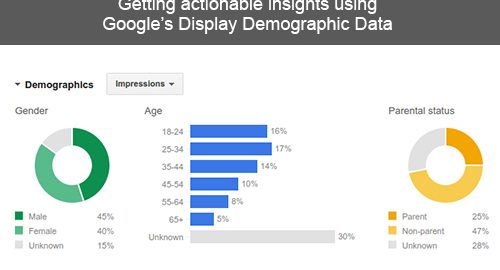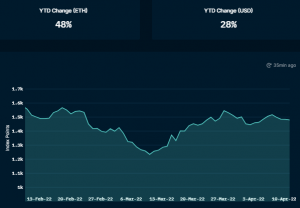I was so fond of marketing (as a subject) during my MBA that I used to keep Philip Kotler’s international bestseller “Marketing Management” at my bedside. He has been my role model ever since, as far as the subject of marketing strategy is concerned.
Internet was in its infancy in those days and little did I know that a day will come when we would buy stuff using a phone. As the Internet proliferated, increased penetration of Internet-enabled smartphones led to the e-commerce revolution. And whoa!!
The business gurus across the world started prophesying the doom stories of traditional marketing. But, we cannot expect a shift in the fundamentals of human behavior by merely changing the platforms of interaction.
Today, when marketers in general and advertising managers in particular talk about the importance of persona analysis instead of pure quantitative analysis, I feel amused. To me, it’s like complimenting my hero Philip Kotler and reemphasizing the fact that the basics of marketing will remain unchanged.
[Image Courtesy: www.prenhall.com]
So, what should you do when your paid search or PPC campaigns aren’t that successful, despite the fact that you’re using the best tools on earth for quantitative analysis?
In this article, we’re going to discuss how persona analysis can make your paid search advertising campaigns more successful.
Move Over Quantitative Analysis
If you’ve been doing a quantitative analysis for a paid search campaign for a long time to improve your account performance and are still wondering why it’s not yielding the desired results, it’s time to try persona analysis.
What’s Buyer Persona?
Simply put, a buyer persona is the detailed description of our target customer.

[Courtesy: www.singlegrain.com]
It tells you the specific details of a person such as their background, experience, personal vs. professional life balance, areas of focus and responsibilities, and their roles in their jobs. It also includes their buying process, time and reason (the when and why) of buying and their goals in life.
Persona analysis tells you a lot about individual buying behavior and ideal customer key attributes. This data will help you to make better strategies to target your customer.
Now, let’s discuss how we can find this information from your PPC account data.
Retrieving Customer Key Attributes Through Paid Search Data
First of all, you should collect all the information available through tools regarding the demographic and psychographic details of your users.
Demographic details include dry facts about a customer such as age, sex, education level, marital status, income, occupation, and religion, etc.
The psychographic details include personality, habits, hobbies, lifestyles, interests, beliefs, opinions, attitude, psychiatric inclinations, spending habits, and values, etc.
Retrieving Key Attributes of a User or Better Targeting

This information can be used for better targeting and better account performance.
The key indicators we can use to get this information include individual order history and his surfing pattern.
Let’s say someone by the name of Arvind uses Amazon.in for online shopping. Now, consider his demographic details:
- He is 35
- He is a marketing manager
- He works with an MNC in Mumbai
- His office address in mentioned in the database, which tells us that he works for a CMMI level 5 company,
- The average salary of a manager is Rs. 10 lakhs per annum in that company.
- This is secondary information and is subject to verification, but this is valuable firsthand information.
Using Order history
Furthermore, let’s assume his order history includes buying management and self-help books, electronic gadgets (such as smartphones, tablets, speakers and earphones), car accessories, deodorants, clothes, gifts, and watches. Occasionally, he also buys baby items, which indicated that he is married and perhaps has children. Wow! that’s a lot of intelligence about Arvind browsing your online web store.

[Image courtesy www.cultofmac.com]
You can also have a look at the items he has viewed or which are there on his wish-list. We also have the data related to time spent on a particular product page or reading reviews of a particular product. This will tell us what is going on in his mind or what might be planning to buy in future.
Now, imagine that Valentine Day is approaching. What should Amazon flash in terms of display ads on his iPad or iPhone or laptop? I think he is game for a beautiful gift (could be a watch, a dress, or a piece of jewelry) for his wife or girlfriend.
There can be hundreds of such indicators or data points, which can be used to target our customers.
Tools to Use to Build Personas
One of the tools we can use to explore this data is Google’s Dimension’s Tab.
This data will help you to build customer personas. Location View in Google’s Dimension’s Tab tells us which part of the region the conversions are taking place. So, don’t be surprised if you see a sudden spurt in sales of gifts made from jute in South Indian region during Navratri, the Hindu festival.
You’re likely to benefit from display ads targeting that region, for the products which are in huge demand on certain occasions like religious festivals etc.
Distance View
This feature allows you to view your account’s performance based on geographical distances from your business address.
Time View
This feature enables you to view the time of the day (along with the date) when your ad receives clicks and conversions.
So, there are numerous insights Dimensions Tab provides you specifically about customer preferences. You can hardly get any demographic detail using this tool, but you get some good insight into the psychographic details and the buying pattern of your visitors. It also reveals valuable data about the most preferred time and days when people surf the web looking for information related to your products.
Key Takeaway: We can use Google Dimension’s Tab to gather useful information related to the location and psychographics of your customer.
Google’s Display Demographic Data
Information which is collected in bits and pieces through GDN isn’t very useful until we merge all the data and get a complete picture. It gives us a broader overview of a customer’s overall personality and his buying pattern.
Now, we can convert this persona analysis into actionable insights.

Actionable Paid Advertising Account Work Using Persona Analysis
We can take the following steps to convert this information into actionable steps.
A. Improve Your Keyword Selection
According to PPC Hero, we use keywords with some different variation of basic root keywords. With persona analysis, we can further expand the keywords that we are targeting. So targeting specific needs is far more effective than using generalized keywords.
B. Intent Based Copywriting for Ads
Use emotions to convert. You can also focus on benefits that generate a better response.
C. Intent Based Landing Pages
If you have a good ad copy to attract visitors, the expectations from your landing page also increase in that ratio. Your landing page should meet the requirements and expectations of the personas you’ve developed.

[Image Courtesy: www.sfweekly.com]
For example, let’s assume that conversion is defined as someone attending the career counseling program organized by Akash Institute. According to the persona analysis, the targeted customer segment of Akash comprises of 16 to 18-year-old students, who might be either appearing for or have passed their 10+2 exams and might also be preparing for engineering and medical entrance tests conducted by the prestigious institutes in India.
Using the analysis, sharing the lists of successful candidates, who have already cleared the competitive exams such as IIT-JEE or MBBS entrance tests, can lead to conversion. Akash Institute’s web marketing team can introduce animations or graphics on their landing page highlighting the previous years’ toppers in IITJEE and AIIMS entrance tests etc.,
A complete list of successful candidates, who had attended coaching classes at Akash Institute will also help in conversion. It will emotionally connect Akash with their desired audience and will convince the students how these coaching classes will help them bag the top ranks at these prestigious institutes. In fact, it’s good for both conversion and branding. So, development of buyer personas will also help your brand to have a unique identity, to present brand messages, and to integrate your brand with your marketing campaigns.
Conclusion
In order to succeed at your paid search campaign, you must understand your target audience first. In the case of online marketing, the channels we use can be electronic, but ultimately these are real people (with emotions, needs, and desires) that we deal with. The more you understand your audience, the deeper would be the impact of your campaigns.
Did you like this post? Please leave your comments, questions or suggestions here.
(83)







